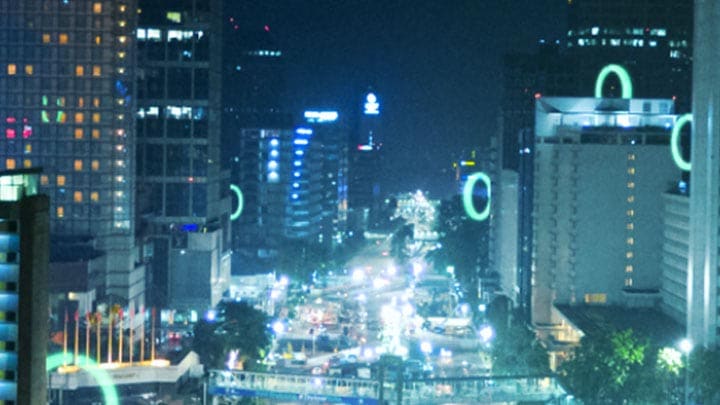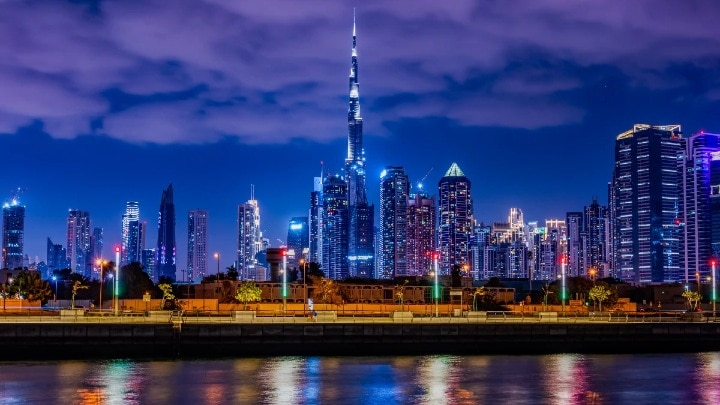July 06, 2020
There are environmental, economic, and social benefits in moving towards city-wide smart lighting systems
City planners across the world are turning their attention towards smart digital infrastructure as they adapt to rapid urbanization.
What was once a simple system of buildings, roads, and bridges is now an integrated and interconnected web of physical and online services as we move ‘online’ – and one such transition has been in the way we light our cities.
Signify is pioneering the way in which street lighting technology can radically expand the possibilities and future-proof urban areas.
Having recently been rated as the 2020 global leader in smart city street lighting by Guidehouse Insights, Signify has recognised the integral role lighting plays in the smart city market.
Essentially, smart street lighting uses a management system which enables streetlight luminaires that are connected to be remotely controlled and monitored through a centralised online application.
With Interact City, a software system for remote monitoring and control of connected street lighting, Signify aims to revolutionize cities by providing not only energy efficient smart street lighting but the means to deliver smart city services that will positively benefit the environment, the economy and citizens alike.
The technology can control remotely the output of individual streetlights, detect faults, monitor energy performance and, when coupled with sensors, even facilitate real time alerts for city-wide problems like traffic flow, parking spaces, electrical outages, and possible accidents.
Switching to LED streetlights can reduce energy consumption by up to 50% across a metropolitan area. Adding smart remote management into the mix can increase that up to 80% for certain applications.
The idea of a smart street lighting system was conceived to optimize electricity use and simplify control, such as dimming.
Today, scene management software is used to adapt light levels to activity, increasing brightness where there’s more footfall, while dimming lights by 30% when sensors detect there are fewer people or cars around.
Similarly, lights adapt to the time of night and season, so electricity usage is optimised in relation to changing circumstances and situations.
Data are continuously monitored and collected and give insights into the efficiency of the system across an entire city, which helps to improve initiatives that push electricity consumption down even lower, as well as meet sustainability targets.
Energy savings are good for the environment and reduce usage costs for municipalities – but the economic benefits of smart streetlighting go beyond reductions in electricity consumption.
While LED streetlights can now pay for themselves from the electricity they save, Signify is taking it a step further. It recently launched its BrightSites smart pole which marks a transition away from streetlights as a necessary cost to a potentially revenue-earning opportunity.
The poles, which are being piloted in various cities across the world, can double up as powerful IT service nodes, housing connectivity applications like 4G/5G and Wi-Fi.

This will help improve wireless connectivity and eliminate potential dead zones, as well as meet capacity demands driven by rapidly evolving consumer data consumption and the exponentially increasing number of connected Internet of Things (IoT) devices. Forecasters suggest that by 2030 there will be around 50 billion IoT devices in use globally.
For city planners, smart poles can provide an aesthetically pleasing digital real estate, enabling dense coverage for telecommunications companies, and even earn extra revenue from displaying advertisements on digital billboards.
“Concealed integrated antennas offer 4G and 5G services from multiple carriers,” said Ronald Gelten, General Manager of Signify’s BrightSites smart pole business. “This delivers on the promise of the smart city of the future, transforming the humble streetlight into a platform for delivering smart city services,” he added.
Signify’s Interact City software combined with its BrightSites smart poles can also improve social aspects of city life.
Being digital, smart poles can accommodate sensors, CCTV cameras and microphones. The latter could even detect sounds such as a gunshot or car crash and alert the authorities. All this can save precious time for first responders, and the brightness can be remotely turned up to aid those attending the scene.
The Indian city of Pune, which has over 3 million residents, is using smart lighting technology to make its streets safer.
Around 80,000 of the city’s halogen streetlights have been replaced with remotely controlled energy-saving LED luminaires.
“Our vision is for Pune to become a smart city, transforming the lives of residents using technology,” said Kunal Kumar, IAS, Commissioner, Pune Municipal Corporation.
Overall, connected street lighting systems can improve general liveability, encourage community life, and help residents feel safer. In fact, studies reveal that good quality lighting alone can deter street crime by 21% and accidents involving personal injury by 30%.
Signify designs its smart streetlights with a circular economy in mind – lights are designed to be highly serviceable with components that can be reused and replaced, and luminaires easily upgradable.
What started off as a quest to drive greater energy efficiencies and more control is moving societies away from the traditional understanding of lighting as a tool for illumination, and towards a tool to improve lives.
Signify (Euronext: LIGHT) is the world leader in lighting for professionals, consumers and the Internet of Things. Our Philips products, Interact systems and data-enabled services, deliver business value and transform life in homes, buildings and public spaces. In 2023, we had sales of EUR 6.7 billion, approximately 32,000 employees and a presence in over 70 countries. We unlock the extraordinary potential of light for brighter lives and a better world. We have been in the Dow Jones Sustainability World Index since our IPO for seven consecutive years and have achieved the EcoVadis Platinum rating for four consecutive years, placing Signify in the top one percent of companies assessed. News from Signify can be found in the Newsroom, on X, LinkedIn and Instagram. Information for investors is located on the Investor Relations page.


December 17, 2024
Transforming Dubai’s iconic buildings with connected lighting from Signify